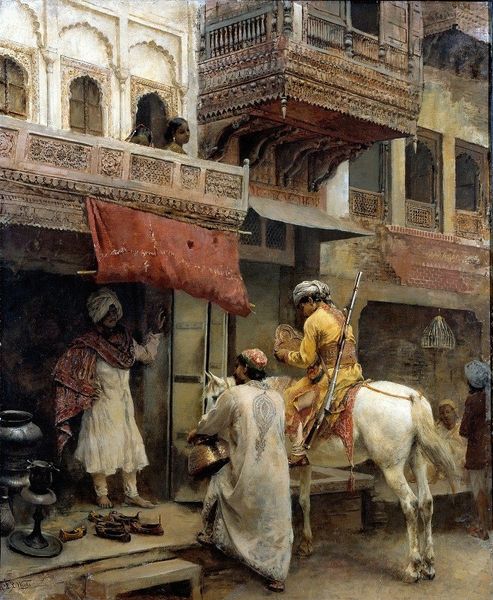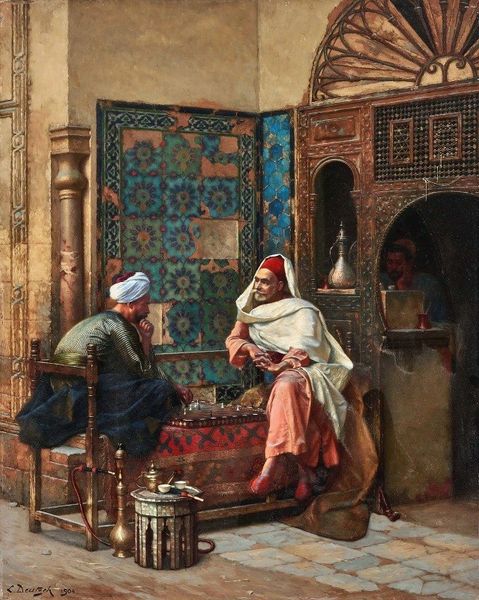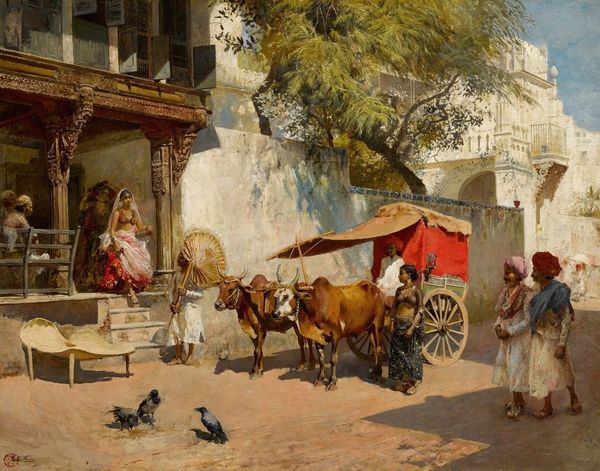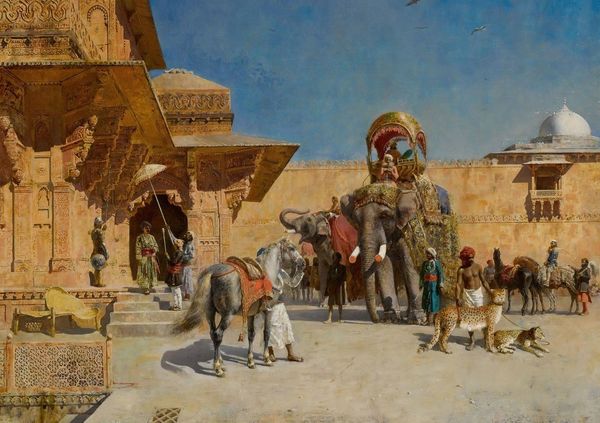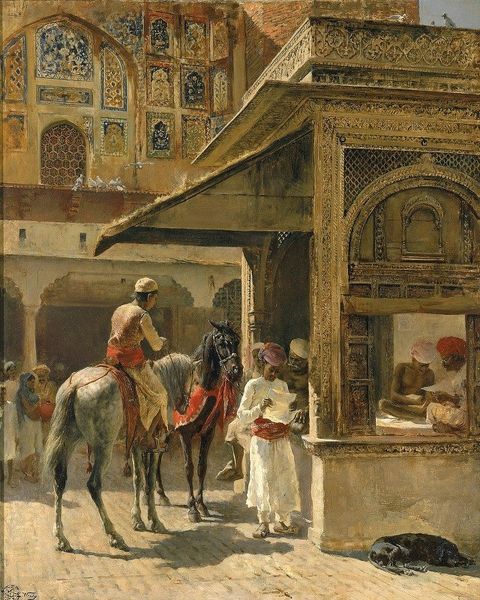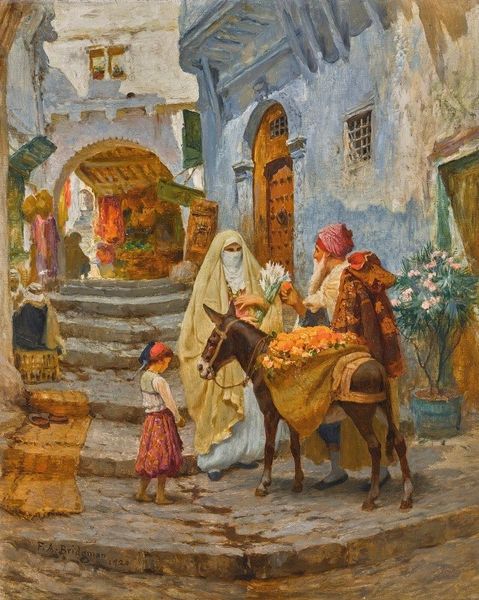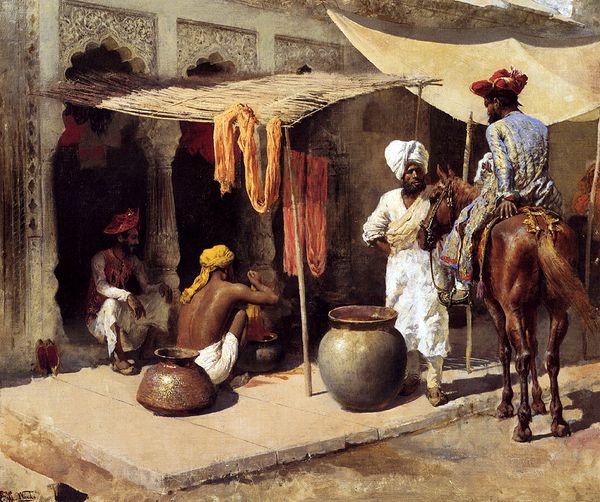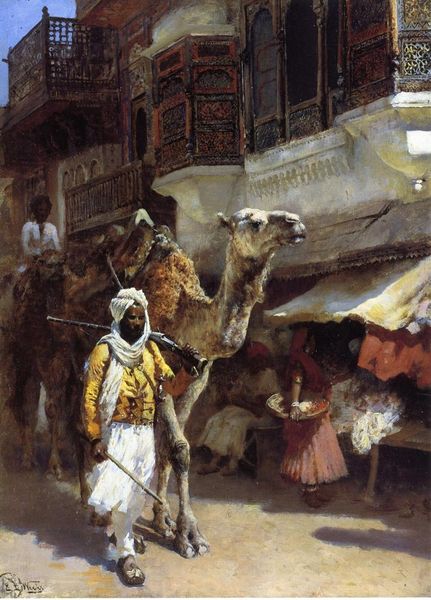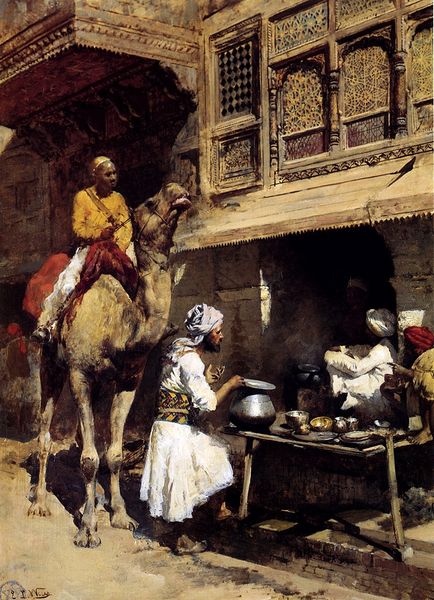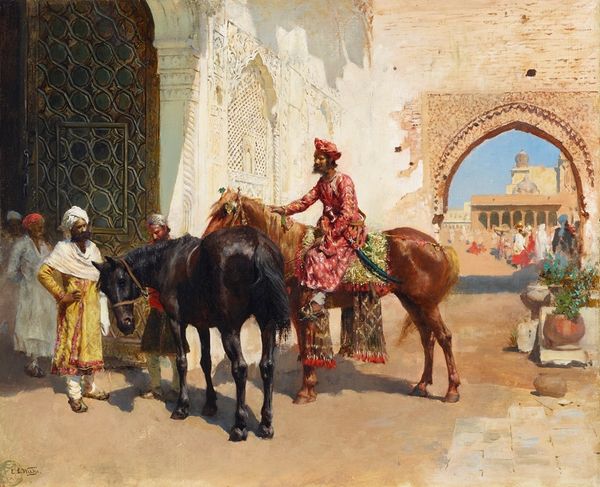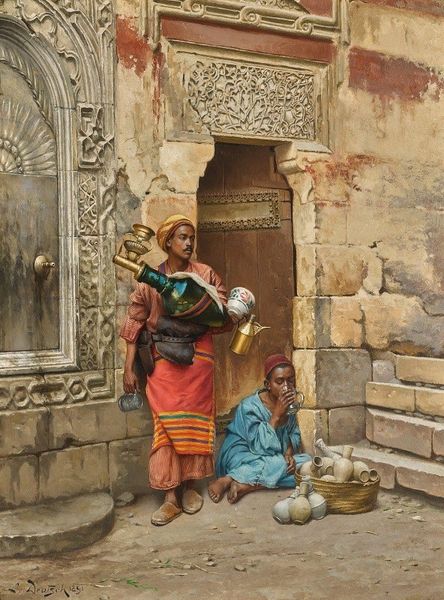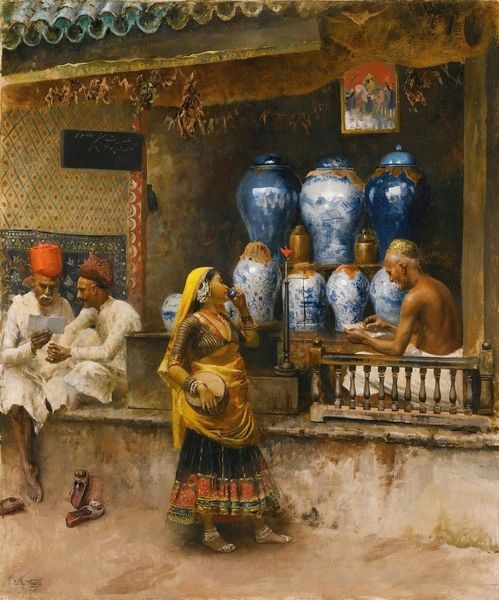
painting, oil-paint, impasto
#
portrait
#
figurative
#
painting
#
oil-paint
#
oil painting
#
impasto
#
orientalism
#
genre-painting
#
realism
Copyright: Public Domain: Artvee
Curator: This is a painting entitled "Street Vendor, Ahmedabad," by Edwin Lord Weeks. Artist: Oh, wow. It feels immediately like stepping into another world. The light is almost palpable, warm and hazy, and that horse! Majestic, but patient. Curator: Weeks was an American artist known for his Orientalist paintings, depicting scenes from his travels in the Middle East and India. Works such as these offered a romanticized, often exoticized view of the East. We need to consider the historical context, the colonial gaze embedded in these depictions, and how they shape our understanding. Artist: That's a great point. There’s a tension for me—I'm drawn to the colours and the intricate detail of the architecture, but aware of the power dynamics inherent in this "outsider looking in" perspective. Look at how he uses impasto to bring the textures to life! You can almost smell the spices. Curator: Indeed, Weeks employed impasto quite liberally. This adds a tactile quality but, more critically, note how the painting frames the seated vendor, emphasizing her role as an object of curiosity and commerce. What are the ethics of depicting someone's livelihood this way, stripping away their agency in the name of art? We also must acknowledge that his images bolstered imperial ideologies that considered Western cultural norms superior. Artist: I see what you mean. It’s a double-edged sword. There is beauty, and I, as an artist myself, value beauty, and it draws me in but there’s also a layer of cultural translation happening that is maybe skewing things. The composition makes me wonder what interaction occurred. Did he get her permission to paint this scene? Curator: Exactly. It provokes so many vital questions around representation, authorship, and cultural exchange. And this also applies to the rider on horseback; he almost represents power, both visually dominating the space, and in a subtle expression of authority. Artist: Right. Well, it is difficult to separate our current sensibilities from the time it was created, but it's so worthwhile to try! This makes me see how images from then have the capacity to change dialogue now! It gives an interesting, very nuanced insight to those eras in the East and the Western gaze, like you said!
Comments
No comments
Be the first to comment and join the conversation on the ultimate creative platform.
